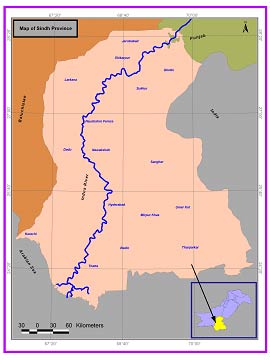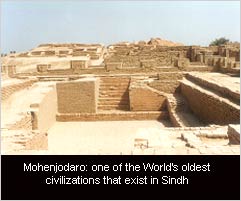
 Sindh, derives its name from the River Indus, which in ancient times was known as Sindhudesh, Sindhu being the original name of the River and desh meaning territory.
Sindh, derives its name from the River Indus, which in ancient times was known as Sindhudesh, Sindhu being the original name of the River and desh meaning territory.
Sindh was the hub of the great Indus Valley Civilization, which can be traced back to around third millennium BC. The Civilization with a population of nearly half a million had well-planned grid cities and sewer systems. Trade activities took place between the Indus Valley Civilization and ancient Mesopotamia and Egypt via established shipping routes. In ancient Egypt, the word for cotton was Sindh suggesting that the bulk of cotton at the time was imported from the Indus Valley Civilization.
The province has enjoyed a rich and eventful history. It was invaded by Alexander the Great in 325 BC. The first Muslim invader of the sub-continent, Muhammad Bin Qasim invaded Sindh in 712 AD, making Sindh an important foothold for Muslims. For the next three centuries the area remained under direct or indirect control of the Arabs. In 1592 Mughals seized control of the region and it remained part of the Mughal empire until the 18th century when it reverted back to the rule of the local dynasties. In 1843 with the British invasion of the sub-continent the province became part of the Bombay presidency. In 1937, due to the efforts of the Muslims, it became a governor’s province and upon partition in 1947 it became part of Pakistan. In 1948 Karachi, the provincial capital was detached and Hyderabad became the provincial capital. In 1955 Sindh was merged with other provinces to form West Pakistan but in 1970 the former borders were restored.
Source: Collier’s Encyclopedia

|